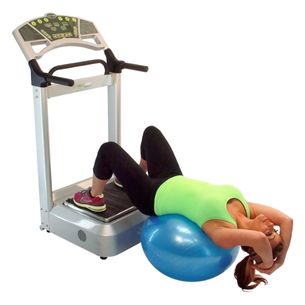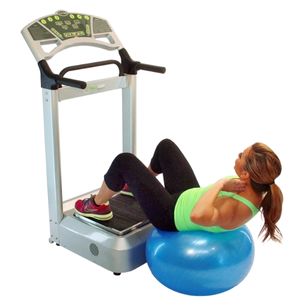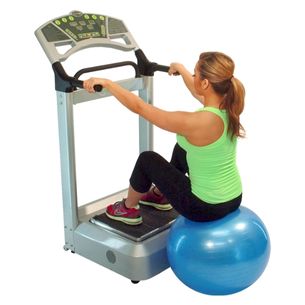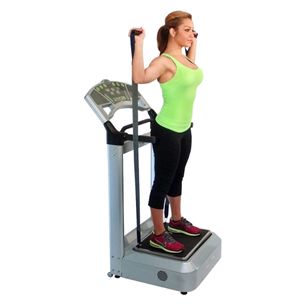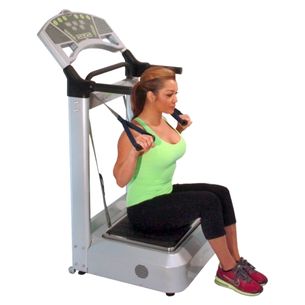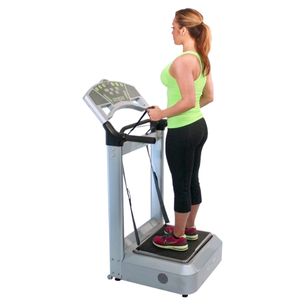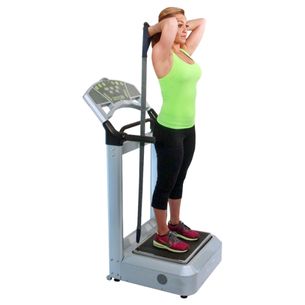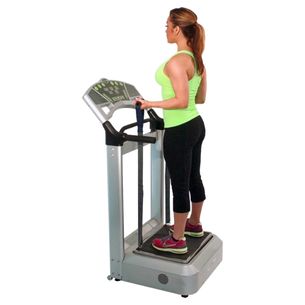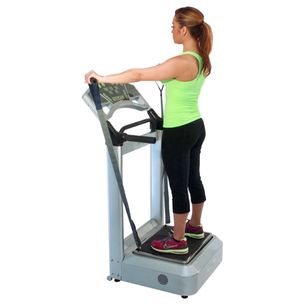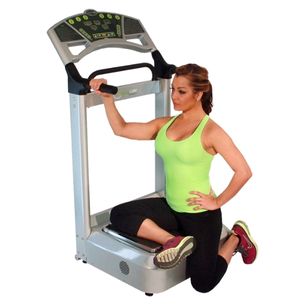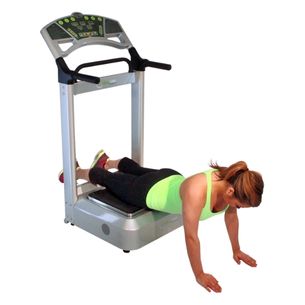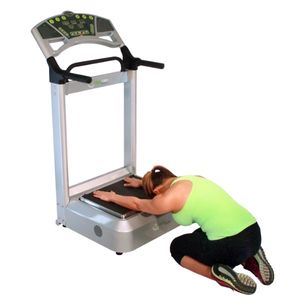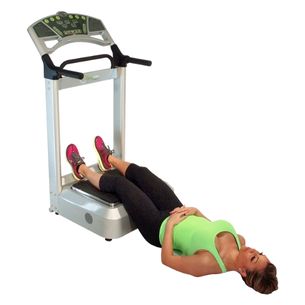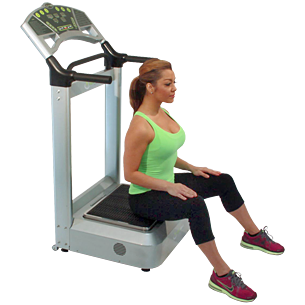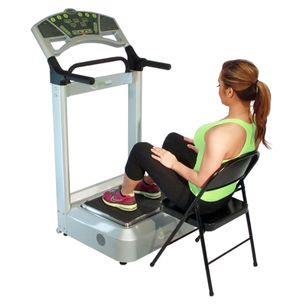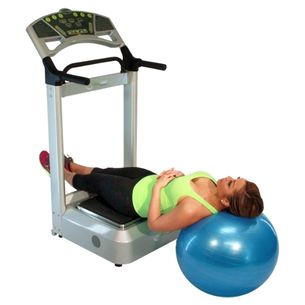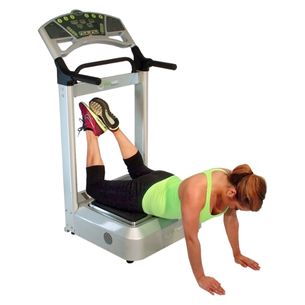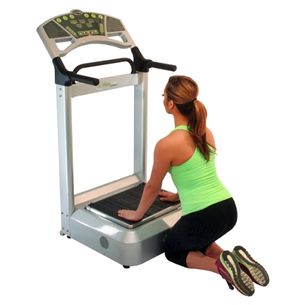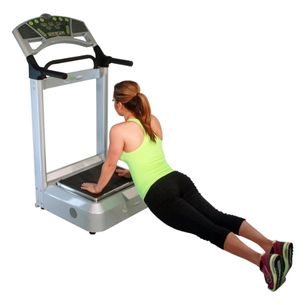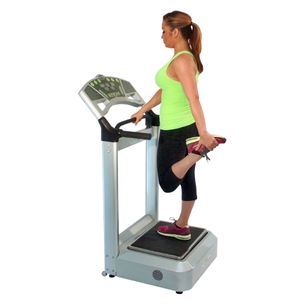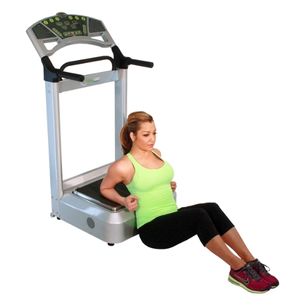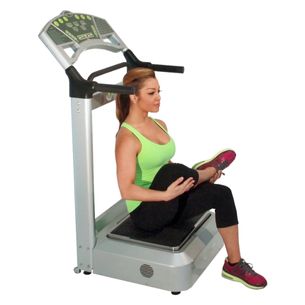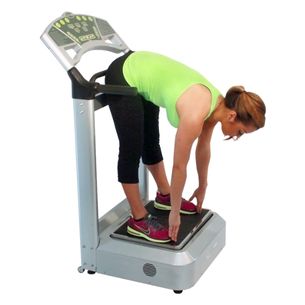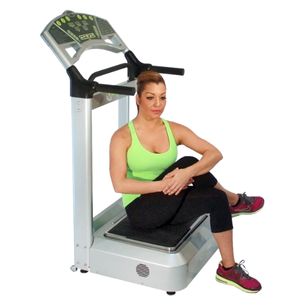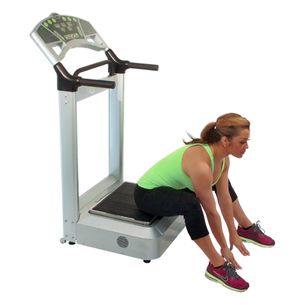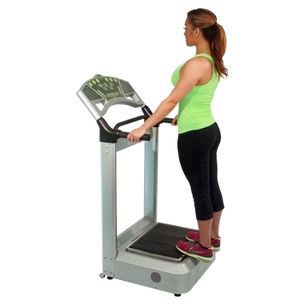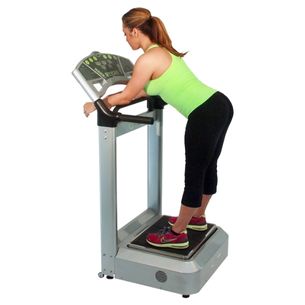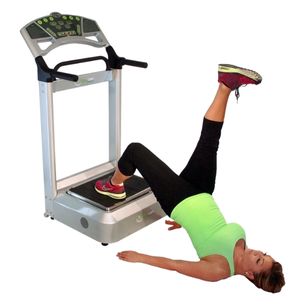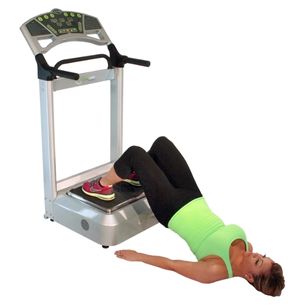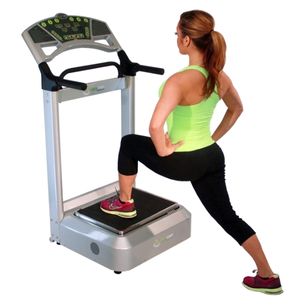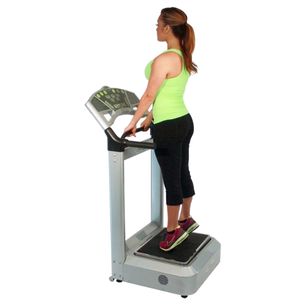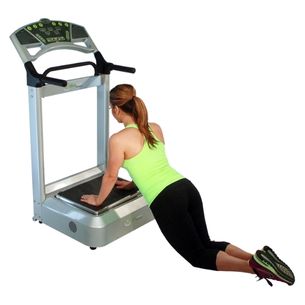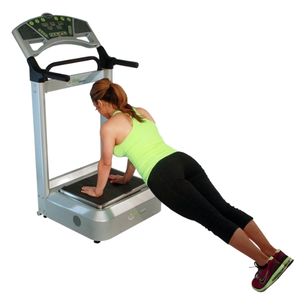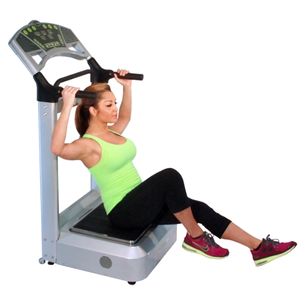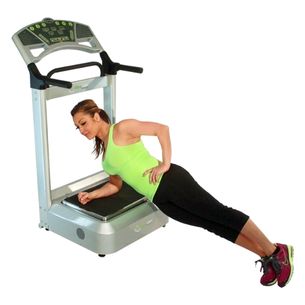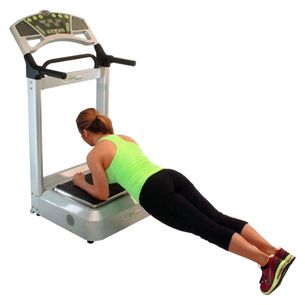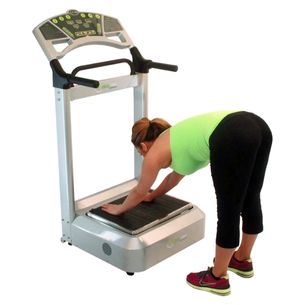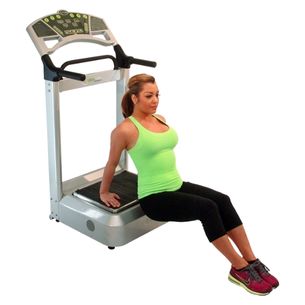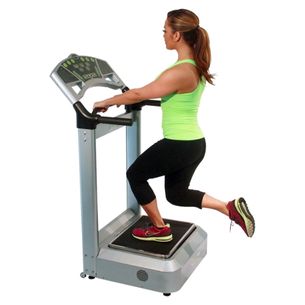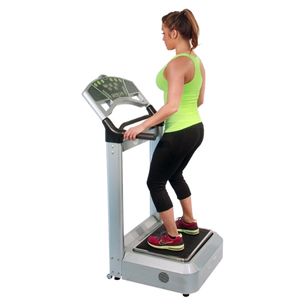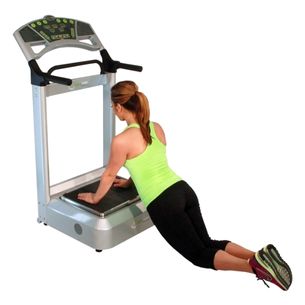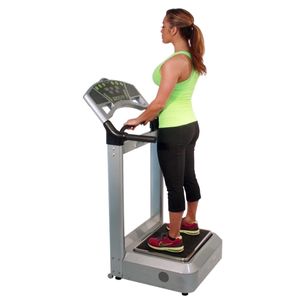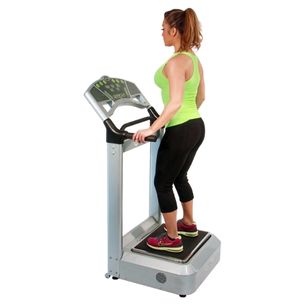What is Whole Body Vibration (WBV)?
Whole Body Vibration is a type of exercise using a vibrating base, which delivers a mechanical stimulus characterized by oscillatory motion at approximately 1 to 15 mm rise creating speeds from 5 to 50 cycles. Whole body vibration exposes the entire body to vibration, as opposed to localized vibration (Biomechanical Stimulation), where an isolated muscle or muscle group is stimulated. WBV exercise platforms enable the user to recruit many more muscles than traditional exercise and trigger other whole-body reactions. WBV causes an involuntary reflex muscle contraction at multiple times per second compared to once or twice a second normally, thereby recruiting both fast and slow twitch muscle fibers during a vibration session. Biomechanical parameters include amplitude, speed, and duration. A ten minute vibration session provides similar health benefits to 60 minutes of traditional cardiovascular, neuromuscular and flexibility exercise training.
What are the whole body vibration therapy & training parameters?
• Amplitude (mm or cm) – the extent of the vertical displacement
• Speed – number of cycles per second
• Duration (sec. or min.) – the amount of time one spends on the apparatus
What are the different types of vibration?
• Oscillating Vibration – The plate movement is driven by a toggle mechanism that vibrates the left and right sides of the plate independently, which is also sometimes described as a “teeter-totter” motion. This is the type of vibration of the VibraWav Pro.
• Vertical Vibration – The plate movement is straight up and down in a unilateral motion.
• Elliptical Vibration – The plate movement is created by a vertically placed motor that has uneven centrifugal plates attached to it. This produces an elliptical motion of the platform which is the mildest form of vibration out of the three types.
How does whole body vibration work?
Vibration training stimulates muscles throughout the entire body, much more effectively than traditional exercise and activity. This stimulation causes a significant amount of muscle contractions per minute. This creates increased blood-flow with an improvement of transport for oxygen/carbon dioxide, vitality components (micro-nutrients), energy components (macro-nutrients) and toxins and waste (i.e. lactic acid) all the way down to the cellular level. Vibration training provides better results in just 10 minutes as compared to 60 minutes of traditional exercise. Through vibration 100% of the muscle fiber is being stimulated versus approximately 40% in the same non-vibration exercise. It takes 8 to 10 months of traditional exercise to accomplish the same results that take only 1 month with vibration.
Are there any contraindications and precautions?
• Pregnancy
• Recent or possible thrombosis
• Cardiovascular complaints, e.g. valve disorder
• Advanced arthrosis, arthropathy, acute RA
• Recent sutures, scars and fresh wounds
• Foot, knee and hip implants
• Any metal/synthetic implants, e.g. pacemaker
• Lumbar disc problems
• Acute inflammations or infections
• Migraine headaches
• Epilepsy

